Houseplant bamboo: growing features, care, reproduction
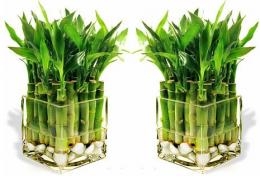
Today, indoor bamboo is becoming increasingly popular among amateur gardeners. And this is not surprising, because this exotic plant has an original and attractive appearance. In addition, bamboo, according to the teachings of Feng Shui, is a talisman tree that brings health, happiness and good luck to the house.
Content:
Indoor bamboo - general information
In fact, this decorative indoor flower has little in common with tree bamboo in its usual and natural form. It belongs to the Dracaena family and its scientific name is Dracaena Sandera. However, due to its external resemblance to its wild counterpart, it is more often called decorative, home, indoor, and sometimes lucky bamboo.
Indoor bamboo - a perennial evergreen plant with a fleshy green stem, on which lanceolate leaves are located at the top. In natural conditions, wild bamboo reaches several meters in height; dwarf plant species are grown in rooms - no more than 1 meter in height. Dracaena blooms rarely; its flowers are small, sometimes collected in inflorescences - panicles.
Growing conditions
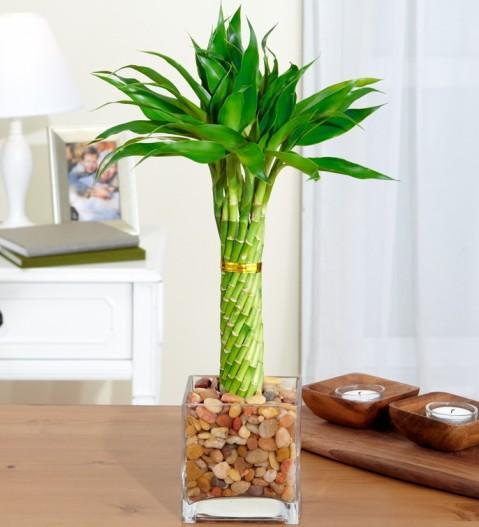
Flower growers recommend growing Dracaena Sandera not in soil, but in water. This is explained by the fact that it is in water that there are the most favorable conditions for the full growth and development of the plant.In addition, the roots of the flower are constantly in water, and this minimizes the risk of developing a lack of moisture and withering of the plant.
As a container for planting bamboo A beautiful glass vase with decorative elements placed on the bottom is perfect for placing in the water. It is important to consider that tap water is not suitable for Dracaena Sandera; moreover, it is destructive for it. For growing Dracaena, the best option is melt or rain water.
However, bamboo also feels good in the ground. To grow the plant, you do not need any special soil; a universal soil for indoor plants is quite suitable. You can prepare the soil yourself by combining sand, humus, peat, foliage and turf soil in equal parts. The only important requirement when breeding Dracaena.
Sander is the presence of drainage holes in the pot. If there are no holes, this can lead to stagnation of water in the pot, mold formation and damage to the plant's root system. In addition, to eliminate increased soil moisture in the pot, it is recommended to lay additional drainage made of pebbles and expanded clay at the bottom of the pot.
Replant the plant should be no more than once a year and preferably in the spring. When replanting, be sure to change the soil.
Indoor bamboo is a heat-loving and light-loving plant. It is recommended to place the pot with the plant in a warm and well-lit place, but protected from direct sunlight. You should not place the flower near a radiator or any heating device, as the air around them is very dry. In summer, a pot or vase with a plant can be taken out into the open air.At the same time, the flower is very unpretentious to air temperature; it feels equally good both at +17o C and at + 35o C.
Caring for indoor bamboo
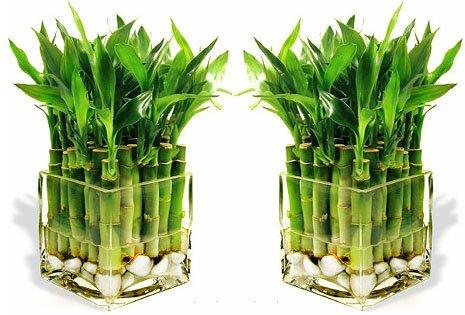
Dracaena Sandera is quite unpretentious, does not require special care and increased attention to itself. The main requirement for successfully growing a plant is timely, sufficient watering.
- In winter and during the off-season, bamboo must be watered moderately, but not allowed to dry out. In the summer, especially on hot days, watering should be abundant and frequent, as the soil in the pot dries. The yellow tips of the plant's leaves will indicate that the watering regime has been violated. You should not water the plant with tap water, as the chlorine in it can destroy it.
- The plant does not need high air humidity in the room, so there is no urgent need to spray the leaves of the plant. However, during periods when the air around the plant is particularly dry, you can spray it with water from a spray bottle.
- Like most plants, bamboo needs regular feeding. It is allowed to fertilize by adding organic liquid fertilizers based on peat or mineral fertilizers to the soil. In summer you can feed bamboo every 3-4 weeks, in winter less often.
- If bamboo grows not in soil, but in water, the water must be changed at least once every 7 days, and every three months it is recommended to add minerals necessary for the full growth of the plant into the water.
Propagation of indoor bamboo
Typically, bamboo is propagated vegetative way. You can take cuttings from the plant all year round. Cut cuttings are rooted in soil or water.
Dracaena Sandecra rarely gets sick, but sometimes owners of the plant notice that its leaves have turned yellow. The reason for this may be damage to the plant by a fungus. Often the leaves turn yellow due to a violation of the watering regime or due to excess fertilizer. In any case, yellow leaves should be removed and yellowed stems should be trimmed. The cut areas should be dried and treated with charcoal powder.
Features of planting and caring for decorative bamboo in the video:
Interesting information about the vegetable garden


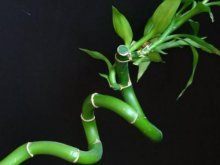
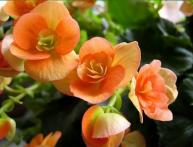
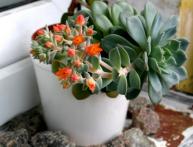
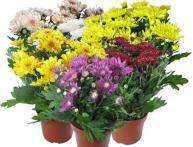
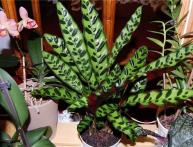
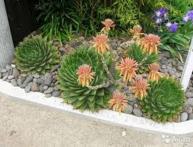
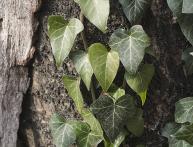
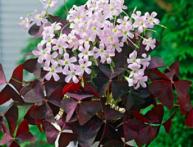

Comments
I wonder if I buy this plant at the store if it will survive transportation home. It's winter outside.
To prevent the plant from freezing, it must be wrapped in something warm. When I buy flowers in winter, I take a terry towel with me, even though I’m in the car. After all, you also have to walk from the store to the car. I just had a bitter experience when I wrapped indoor flowers in newspaper, walked two meters with them in winter and they froze. It was a shame. I'm interested in another question: if you buy this plant in winter, can it be replanted? They say that it is better to do this in the spring, the plant gets sick less. Now I don’t know whether to buy it now or leave the purchase until spring or buy it and let it sit in a pot from the store?
I really like bamboo. I have it in the water at home and it looks wonderful. I didn’t even suspect that you could plant in the ground before I read the article.
It is a good indoor plant and it grows in our home, but caring for it is more important than other similar plants, since it is exotic, after all. And it's not cheap. Try not to lose it.